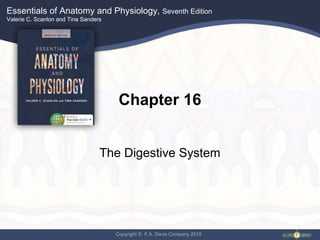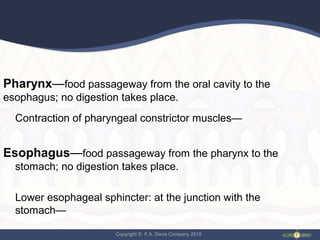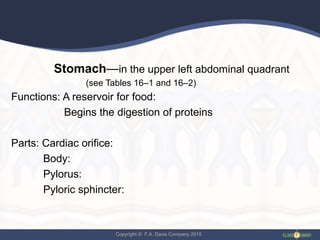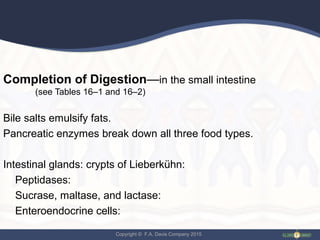The document summarizes key aspects of the digestive system, including its main divisions and functions. The digestive system breaks down food mechanically and chemically. Mechanical digestion increases surface area through processes like chewing, while chemical digestion involves enzymes that break molecules into simpler compounds. Digestion occurs along the alimentary tube from the mouth to anus, aided by accessory organs like the liver, pancreas and gallbladder. The end products of digestion, like carbohydrates, proteins and fats, are absorbed and used by cells.
































